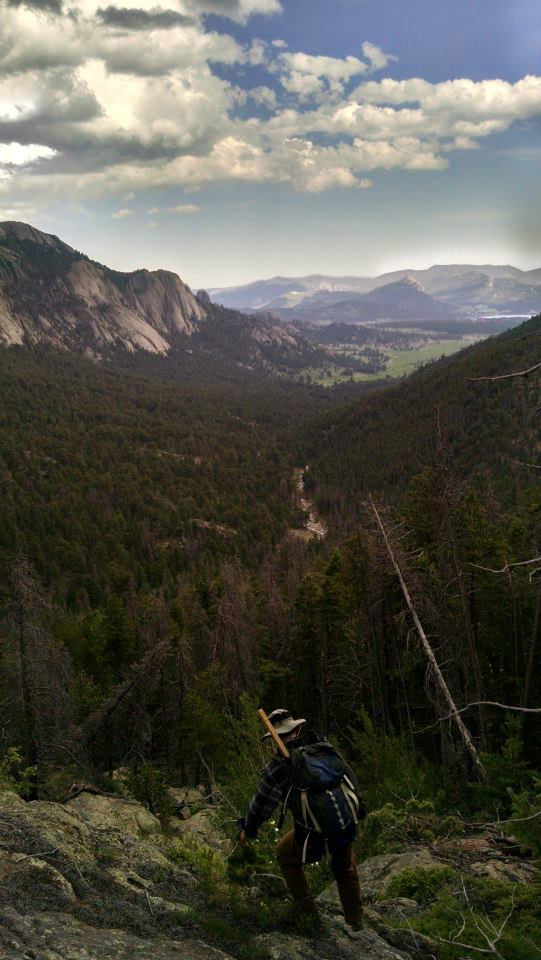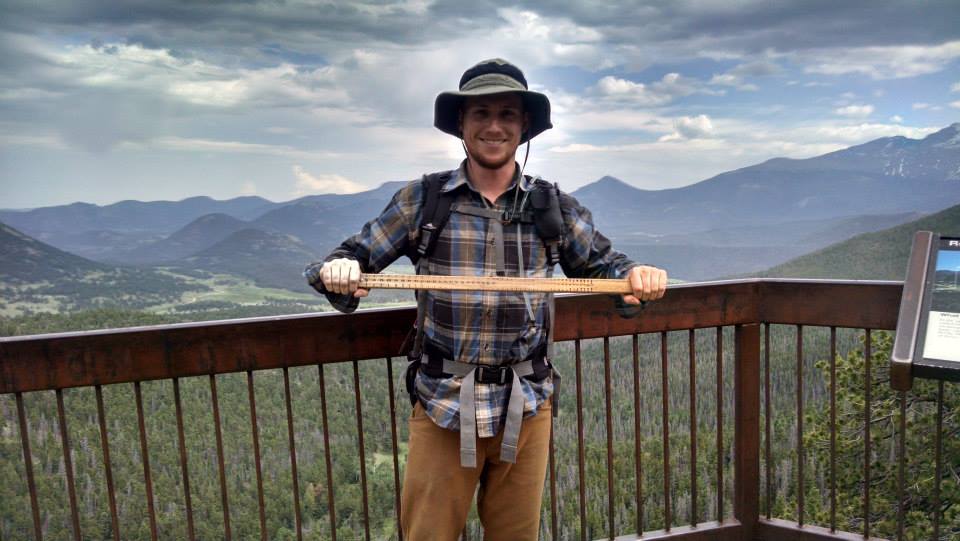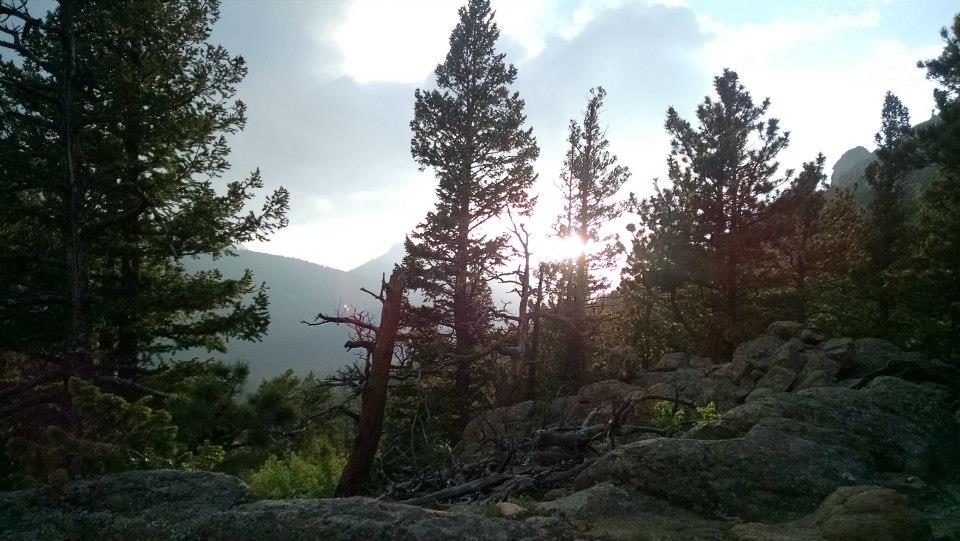
Research in Action: Beetles and Climate Change
by Aaron Sidder

My life in the field mostly involves steep slopes, traversing an obstacle course of downed logs that calls to mind pirates (“walk the plank, yarrrgghhh”) and drill sergeants (“crawl under that log, soldier!”), and seemingly endless plots of subalpine fir, Douglas-fir, Engelmann spruce, and lodgepole pine. In other words, peril punctuated by tedium. But then I clear the trees and get a superb view of Lumpy Ridge in Rocky Mountain National Park (left), or a massive bull elk casually strolls through my picnic spot, and I’m reminded of how incredibly lucky I am to call the forest my office.
I am working this summer for Dr. Jason Sibold, a geographer in GDPE and the Department of Anthropology at CSU, researching the changes in the forests of Rocky Mountain National Park. We are studying how beetle outbreaks and climate change have changed forest community composition. Our focus this summer is to resample a collection of plots established in the 1970s and early 1980s to evaluate how far they have changed since. Resampling these plots will help us to define the historic range of variability of forest systems in Rocky Mountain National Park and identify the current conditions and trends.

Because the initial sites were sampled before the age of cheap handheld GPS units, we generally have to navigate to the sites using old topographic quadrangles and a suite of descriptors like slope, aspect, exposure, rocks, and forest composition. Sometimes the right combinations are easy to find, and we feel confident that we’ve found the right site. Other times, things just do not make sense, and we feel a slight panic that we’ve lost important historical data because we can’t find the site. Such is the life of an ecological sleuth.
Once we arrive at the site, we identify the trees in the forest, and to a lesser extent, the accompanying shrubs and forbs. Thankfully for me, there are really only about seven trees we ever see: ponderosa pine (Pinus ponderosae), lodgepole pine (Pinus contorta), limber pine (Pinus flexilis), quaking aspen (Populus tremuloides), subalpine fir (Abies lasiocarpa), Douglas-fir (Pseudotsuga menziesii), and Engelmann spruce (Picea engelmannii). We then measure the diameter at breast height (DBH) of all trees, dead and alive, using our Biltmore sticks – I have named my stick Excalibur. We also record signs of beetle and other vital information like elevation, aspect, slope, and ground cover vegetation.
So, how has the forest community changed? Based on my field observations, we are not seeing a changing of the guard at these sites; i.e., despite the abundance of dead trees there do not appear to be widespread changes in dominant species or composition. However, only a rigorous analysis and complete dataset will show the full picture. For more information on Jason’s research, you can follow his projects at his website: http://biogeography.colostate.edu/.

All photos courtesy of Amanda Carlson.